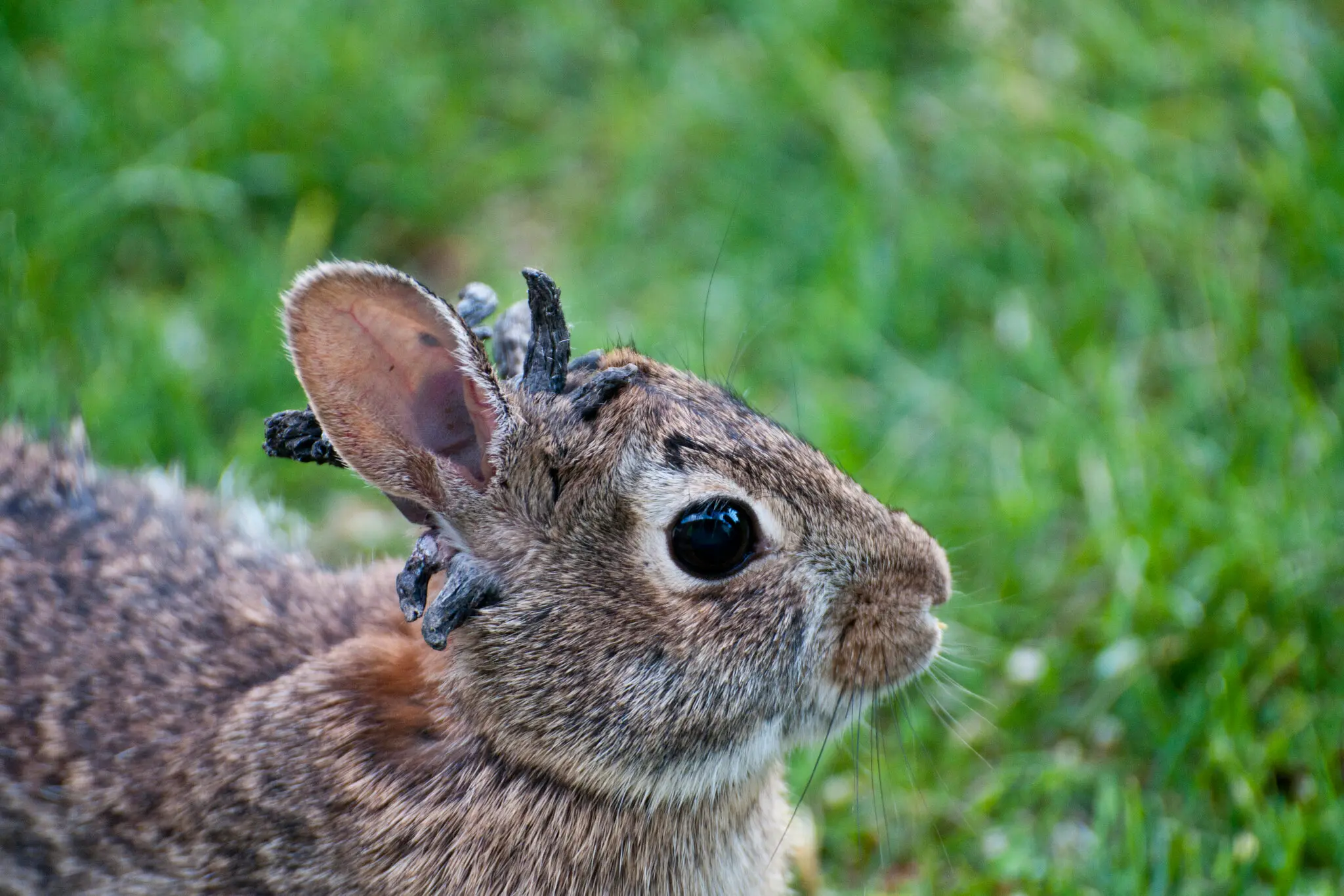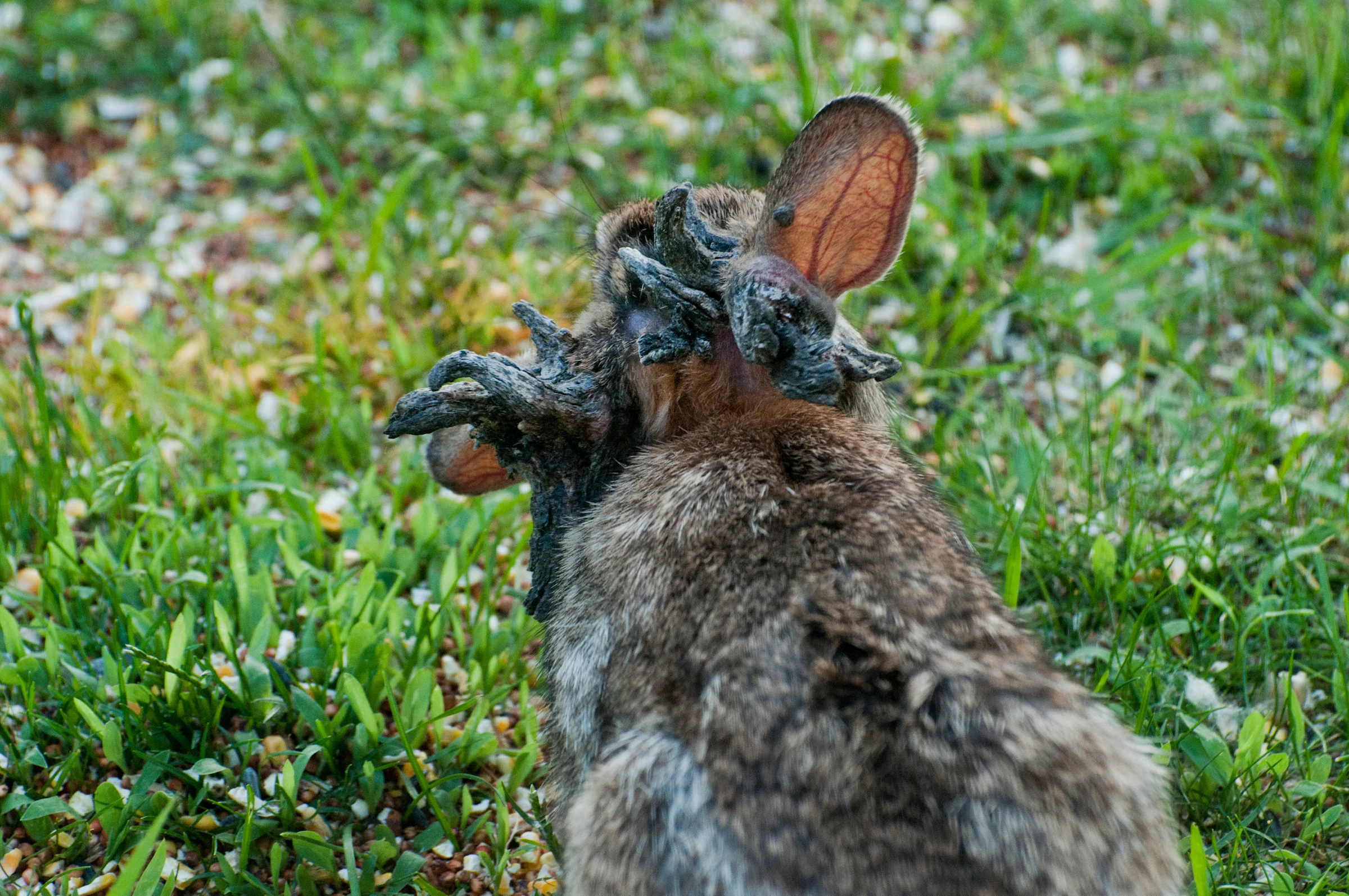Horned Rabbits Spotted in Northern Colorado: The Facts

Horned rabbits spotted in northern Colorado: the facts have surprised many residents in recent days. Locals are reporting wild rabbits with black, horn-like spikes or tentacle-shaped growths in backyards and fields. Some even have growths covering their eyes.
These images have spread quickly on social media, fueling speculation. Wildlife experts say the truth is far less sinister.
The cause is Cottontail Rabbit Papillomavirus (CRPV), a virus that targets wild cottontail rabbits. It triggers wart-like or keratinized growths, often around the head, mouth, and eyes.
“They look shocking, but it’s not some horror mutation,” said Kara Van Hoose, spokesperson for Colorado Parks and Wildlife (CPW). “It’s a natural virus. Rabbits usually recover unless the growths stop them from eating or seeing.”
First CRPV Cases Reported in Fort Collins
The first case this week was reported last Friday from Fort Collins, approximately 65 miles north of Denver. Within days, CPW received more than a dozen calls from concerned residents. Many said the rabbits looked “like something out of a sci-fi movie.”
CRPV isn’t new. The virus has lived in wild rabbit populations across North America for decades. People notice it more in summer because insects are active and spread the virus.
How Cottontail Rabbit Papillomavirus Spreads
Biting insects — mosquitoes, ticks, and fleas — carry CRPV from one rabbit to another. Once infected, a rabbit may develop small lesions. Over weeks, these can harden into thick, horn-like projections made of keratin, the same material in hair and nails.
Wild rabbits can survive if the growth stays small. In severe cases, the masses block vision, mouth movement, or feeding, which can lead to starvation.
There’s no cure or treatment for wild rabbits. Wildlife agencies leave infected animals in the wild unless they show signs of extreme distress.
Are Horned Rabbits Dangerous to Humans or Pets?
For humans, the answer is no. CRPV doesn’t infect people. But pet rabbits face higher risks. Domestic rabbits can develop more serious symptoms, including cancer, if infected.
The National Institutes of Health (NIH) warns that CRPV can progress quickly in domestic rabbits. Early veterinary care is vital.
What to Do If You See an Infected Rabbit
Wildlife officials advise:
- Don’t touch or catch the rabbit. Handling wildlife can harm both you and the animal.
- Keep pet rabbits indoors if you see horned wild rabbits nearby.
- Avoid feeding infected wild rabbits. Feeding draws them together, increasing the spread.
- Take your rabbit to a vet if you notice unusual growths.
“People want to help,” Van Hoose said. “But the best help is often letting nature take its course.”
Horned Rabbits in the News Beyond Colorado

This isn’t the first time rabbits have gone viral in 2025. Earlier this month, several rabbits from a photo shoot by Anna Delvey — a figure infamous for fraud — were abandoned in Brooklyn’s Prospect Park. They were later rescued.
The horned rabbits in Colorado are a different story — one grounded in wildlife biology, not scandal. The sight may be unsettling, but it’s part of nature’s odd and sometimes fascinating patterns.
The Bigger Picture: Nature’s Oddities in Wildlife
Unusual appearances in wildlife often cause fear before people understand them. “Nature is metal,” Van Hoose said. “Sometimes what looks grotesque is just another natural occurrence.”
Colorado’s horned rabbits will likely remain visible until the summer insect season ends. Once insect activity drops, new infections should decline.
Learn more about CRPV and other wildlife health topics at Colorado Parks and Wildlife.
